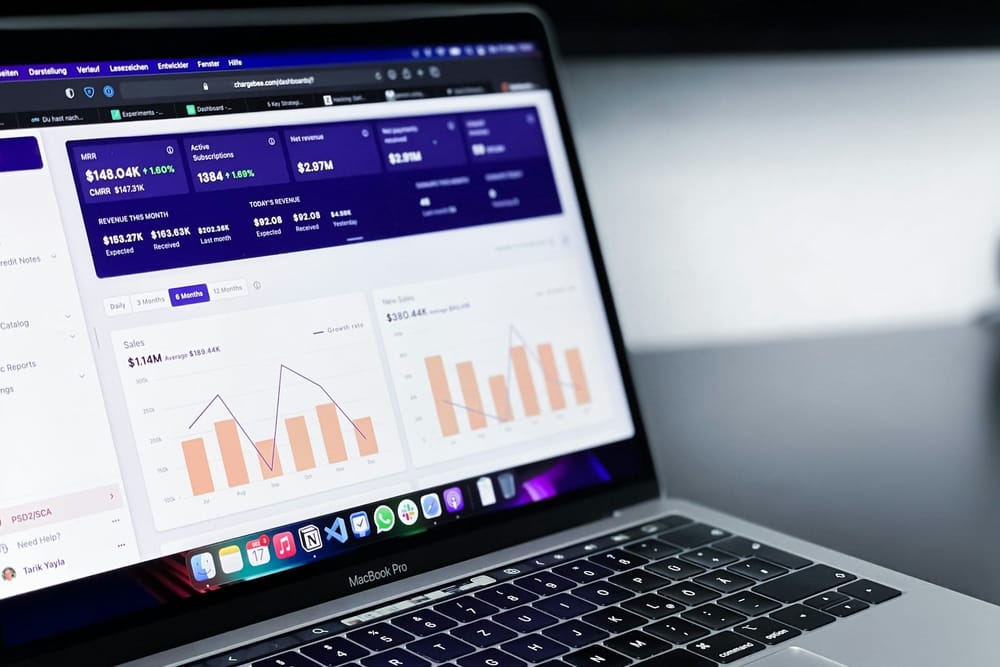Understanding your customers' needs and preferences is imperative. This is how we refine products, services, and overall customer experiences.
Customer Service Analytics (CSA) is a powerful tool that enables companies to analyze vast amounts of data from customer interactions and feedback. This analysis yields valuable insights that can be leveraged to enhance customer support, marketing, and product development, leading to actionable solutions and improved business outcomes.
What is Customer Service Analytics?
Customer Service Analytics (CSA) starts with collecting and analyzing data from customer interactions. These interactions can occur across various channels, providing companies with incredibly useful insights to enhance customer experience and business outcomes.
CSA is more than just basic data collection; it's a comprehensive, in-depth analysis of customer behavior, preference, and sentiment.
You can collect this data from phone calls, chat logs, emails, surveys, and social media interactions. By converting this raw data into actionable insights, companies can identify patterns and trends highlighting customer preferences, behaviors, and potential issues. As a result, businesses can enhance their strategies to provide more personalized and efficient customer experiences.
For example, the software company Hotjar extracts insights from support conversations, using advanced analytics tools like AI and natural language processing to make improvements to marketing, product development, and customer experience.
Why Is Customer Service Data Analytics Important?
There are plenty of reasons why Customer Service Analytics is essential. For one, it helps businesses identify the key areas where they can improve, understand overall customer sentiment, and optimize customer service processes and operations.
According to Gartner, 84% of customer service and customer service support leaders consider data and analytics to be "very or extremely important".
CSA can also offer insights useful for customer journey mapping. Businesses can use this mapping to better understand interactions at each touchpoint, which can improve customer loyalty through better targeting and more effective marketing strategies.
Improved Customer Satisfaction
Customer Service Analytics (CSA) plays a crucial role in improving Customer Satisfaction (CSAT) scores. By using CSA, companies can gain a better understanding of customer pain points and expectations, enabling them to tailor their services to meet these needs and improve overall customer satisfaction.
The recipe box company Gousto gets customer service data and applies it to everything from operations to marketing.
Operational Efficiency
Customer service analytics can reduce support costs by identifying common customer issues and optimizing resolution processes. This allows businesses to handle more inquiries more efficiently and reduce overall handling time.
According to Salesforce, 69% of service agents struggle to balance speed and quality. Process optimization allows for better resource allocation and improved operational effectiveness.
Uber uses customer service analytics tools to support interactions across multiple platforms, resolve customer issues, and streamline support operations.

Enhanced Data-Driven Decision Making
Customer service analytics are important in making decisions and developing a culture that values fact-based decision-making.
Management and decision-makers can improve customer service strategies and enhance product offerings using data-backed customer service insights. For example, James Villas uses CSA to identify and prioritize urgent tickets.
What Are the Main Types of Customer Service Analytics
We've already alluded to some types of customer service analytics above, but here are the four categories they typically fall into.
Prescriptive Analytics
You can employ prescriptive analytics to create recommendations for actions using historical data and predictive models.
Prescriptive analytics can be used to anticipate future trends or determine the best course of action in specific scenarios.
If a CSA tool detects a high customer churn risk, it might prescribe (hence prescriptive) personalized discounts or proactive outreach to improve customer retention.
If a customer is unhappy with an issue they've encountered, prescriptive analytics may suggest contacting the customer, offering an apology, and providing a solution.
Prescriptive analytics typically help with customer retention, particularly by sharing key metrics with customer service teams.
With prescriptive analytics, companies can identify cross-selling and upselling opportunities and offer more tailored products and services that match their customers' needs.
Descriptive Analytics
If prescriptive analytics prescribe what to do, descriptive analytics describe what's already happened.
Companies can use descriptive analytics to analyze ticket volumes by channel (email, chat, phone, etc.) over a certain period. They can then use this data to understand the most used channels and allocate more resources to busier channels to improve response times and enhance business performance.
Over time, descriptive analytics can be used to monitor overall performance metrics. Businesses then use the insights based on historical trends to adjust their customer service strategy.
Tools can offer smart reports, including ticket volume, open tickets, average first response time, and more.

Predictive Analytics
Using historical data, machine learning, and statistical algorithms, predictive analytics forecast possible future trends so businesses can anticipate potential issues and take proactive and precautionary measures against them.
Customer journey analytics, for example, can be used to map out and understand how customers interact with brands across various touchpoints. Predictive analytics, for instance, could be used to anticipate increased support requests over specific periods and seasons.
Addressing potential issues before they escalate can reduce customer churn rates. By being proactive, businesses can enhance customer experience, manage resources more effectively, and prepare for potential challenges.
SproutSocial, for example, uses predictive analysis to identify potential social media trends, outperforming leading social media platforms. Awareness of changes in customer sentiment and issues before escalation helps maintain the brand's reputation.
Diagnostic Analytics
Businesses can employ diagnostic analytics to identify the causes of problems and issues. This helps them understand spikes in complaints after a product update or launch and get to the root of the problem.
Diagnostic analytics help pinpoint the cause of issues and reduce the time taken to resolve complex customer service issues.
Businesses using diagnostic tools and analytics can implement preventative measures, particularly ones that reduce the likelihood of past issues repeating.
Zendesk uses diagnostic analytics to identify the causes of spikes in customer complaints after product updates and campaigns, helping them understand the causes and implement measures to prevent potential future problems.
Customer Service Analytics Use Cases
Customer service analytics can improve business performance in many ways, but these are just a few of them.
Companies that use CSA data are better suited to anticipate customer needs and expectations. They can ensure that product features and enhancements resonate better with their target market and that their products and services are relevant to their customers.
Building Self-Service Tools
Customer service analytics are particularly useful for creating comprehensive self-service tools. You can analyze the most commonly recurring issues and questions to create thorough FAQs, knowledge-based, or even train chatbots to let customers solve problems almost autonomously, without the need for intervention from a human customer support agent.
As mentioned earlier, Gousto's use of CSA allowed them to create FAQs and knowledge bases. However, the company has streamlined more than self-service, with overall operations benefiting from using CSA.
Improving Product Development
Your CSA data is also invaluable for product development. Here, you can see and outline what customers like, what they don't, what they find challenging, and what needs urgent change.
Analyzing the reasons customers return products can give you an excellent idea of what steps to take, either when updating a current product or designing a new one.
Bonfire, a Web3-enabled community platform, used behavioral cohort analysis to segment customers and improve feature adoption and activation. This largely enhanced retention and time to market.

Enhancing Customer Experience
Customer service analytics and customer experience go hand in hand. Use CSA to address customer dissatisfaction and improve the overall customer experience proactively.
CSA for monitoring customer sentiment on social media is particularly useful for handling PR issues, especially given how essential customer experience is in purchasing decisions.
CSA Metrics and KPIs
As with all data and analytics, you want to track key metrics and KPIs to understand everything.
These KPIs are particularly useful for identifying trends and patterns in customer behavior and developing strategies to boost customer engagement and retention while reducing customer churn.
CSA falls into two main categories: Customer Experience KPIs and Customer Retention KPIs.
Customer Experience KPIs
Let's start with customer experience KPIs and a few you're likely familiar with.
Customer Satisfaction Score (CSAT)
The Customer Satisfaction Score or CSAT measures a customer's overall happiness with a service or product.
To get this, you can ask customers to rate their satisfaction on a scale from 1 to 10, with 10 being the best.
Qualaroo used user feedback software to gain insights into customer happiness levels, analyzing it with AI.
Average Handling Time (AHT)
Average handling time is the time taken to solve a customer's issue, including every part of the process, time on hold, time interacting with customer service agents, and follow-up actions.
Every company and business should be looking to reduce AHT.
First Response Time (FRT)
First response time (FRT) is how quickly a customer can get a response from a customer service agent. The shorter the FRT, the higher the customer satisfaction.

Customer Retention KPIs
Customer retention KPIs are important for ensuring that customers stay loyal.
Net Promoter Score (NPS)
The net promoter score (NPS) is a metric for customer loyalty. It's determined by asking customers how likely they are to recommend your brand to others.
Typically, the higher the NPS, the stronger your brand advocacy.
Userpilot, for example, uses customer analytics to conduct NPS surveys and analyze the results to identify detractors. These detractors can then be segmented and proactively focused on addressing concerns and reducing churn.
Customer Effort Score (CES)
The customer effort score (CES) measures the effort customers exert to resolve issues. Unlike some of the other metrics and KPIs we've seen so far, a lower CES is better.
A low CES usually results in high customer satisfaction.
You can get a CES from customers my asking them to rate how easy it was for them to resolve their issue. This can be on a scale of 1 to 5, 1 to 7, or 1 to 10.
Customer Lifetime Value (CLV)
The customer lifetime value (CLV) is how much revenue a customer will bring throughout their entire relationship with the company.
Loyal customers result in a higher CLV and better retention.
You can calculate this by taking the average purchase value (the total revenue divided by the number of purchases during that period). Then, take the average purchase frequency rate. Finally, you'll need the customer lifespan or the average time a customer continues buying from the company.
Multiply the average purchase value by the purchase frequency rate and customer lifespan, and you will have your CLV.
Customer Retention Rate (CRR)
The customer retention rate (CRR) measures the percentage of customers a company or business will keep over a predetermined period.
The higher the CRR, the more satisfied customers are with the brand.
Customer Churn Rate
Essentially, the customer churn rate is the opposite of the customer retention rate. It is the rate at which customers stop doing business with a company.
The higher the churn rate, the lower the customer retention rate. Monitoring customer churn rate is worthwhile to identify potential problems with products or services, particularly in customer service, where customers can be lost as easily as they can be retained.
As you can see, Customer Service Analytics (CAS) is an incredibly powerful tool for any business or company looking to gain insights into their customers' behavior, preferences, and pain points.
CSA can improve customer satisfaction, operational efficiency, and decision-making, improving customer experience and brand loyalty.
There are plenty of examples of companies already using CSA with incredible results, such as drastically improved activation rates, improved efficiency, and boosts to many different departments.
Adopting CSA will be a key differentiator for any business, especially when used to create efficient customer experiences. It's no longer an option for companies but an essential asset for long-term growth and success.
Luckily for you, there are tools you can use to help with all of this like collecting and analyzing data.
YeldaAI and our AI-powered callbots, for example.

